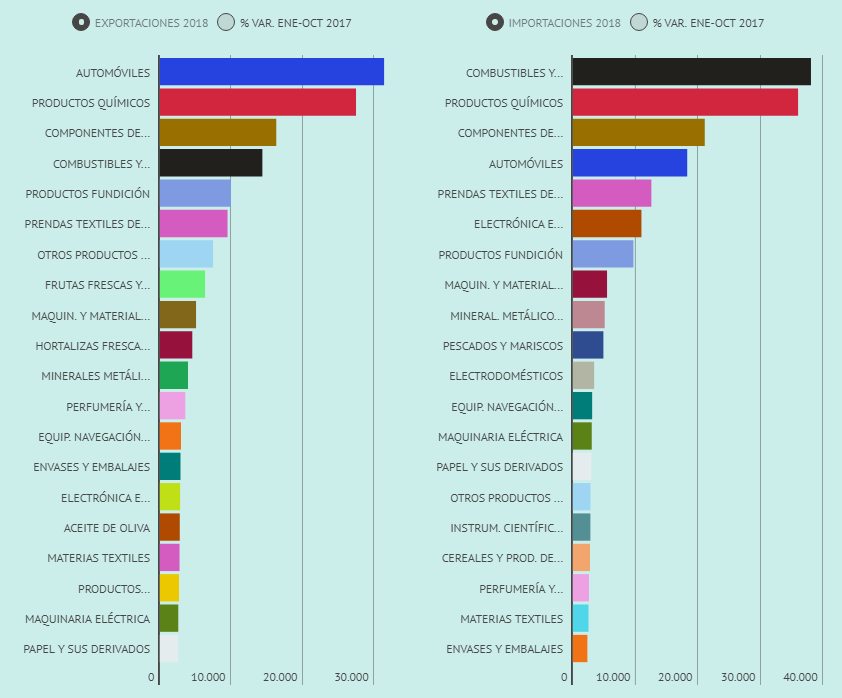The Spanish trade balance: what we buy and what we sell

Spain is one of the world’s largest economies and one of the most active countries in the European Union. Since the opening of borders and the integration of our country into the European common market, the volume of international trade has only increased.
Spanish Trade balance

Spanish exports and imports have grown substantially in recent decades to the point where our economy is fully immersed in what is now called globalization. A system of interdependent international and economic relations in which trade in goods and services plays a fundamental role. The Spanish trade balance is the accounting document that compiles all these terms of trade. The latter has always been negative, i.e. we import more than we export.

But what does Spain buy the most and sell the most? In general, there are many misconceptions about the Spanish trade balance. In this article, we have sought to elucidate the keys to what is sold and what is bought most in Spain. In addition, we have researched the most dynamic sectors of activity in Spain that contribute to this trade balance.
What is Spain selling?
During the Spanish crisis in 2012, exports were the most efficient; they continued to grow while the rest of the economy was practically in recession. Spanish exports are therefore very important and are currently booming. The main destinations are Italy, Germany and France.
All sectors of the economy have increased their exports in recent years, with the exception of the automotive sector. In addition, if we look closely at the Spanish trade balance, we will see that it is precisely the fruit and vegetable sector that drives exports because of the good quality and price of Spanish food products. Other products that benefit from strong international demand are wine, olive oil and gourmet products.
Capital goods are also different. All materials needed to build roads, ships and all kinds of heavy machinery would fall into this category. There has been a lot of growth in this sector. Similarly, something similar is happening in the chemical sector, one of the most dynamic during the crisis. The automotive and related sectors have also experienced significant growth.

Finally, the other economically stronger sectors in Spain are textiles, footwear and toys. These three sectors are responsible for a large part of the exports that we can observe in the Spanish trade balance and contribute decisively to the international economic expansion of our country.
Other links of interest:
The gastronomic market in France
We accompanied 4 of our clients to Alimentaria 2018